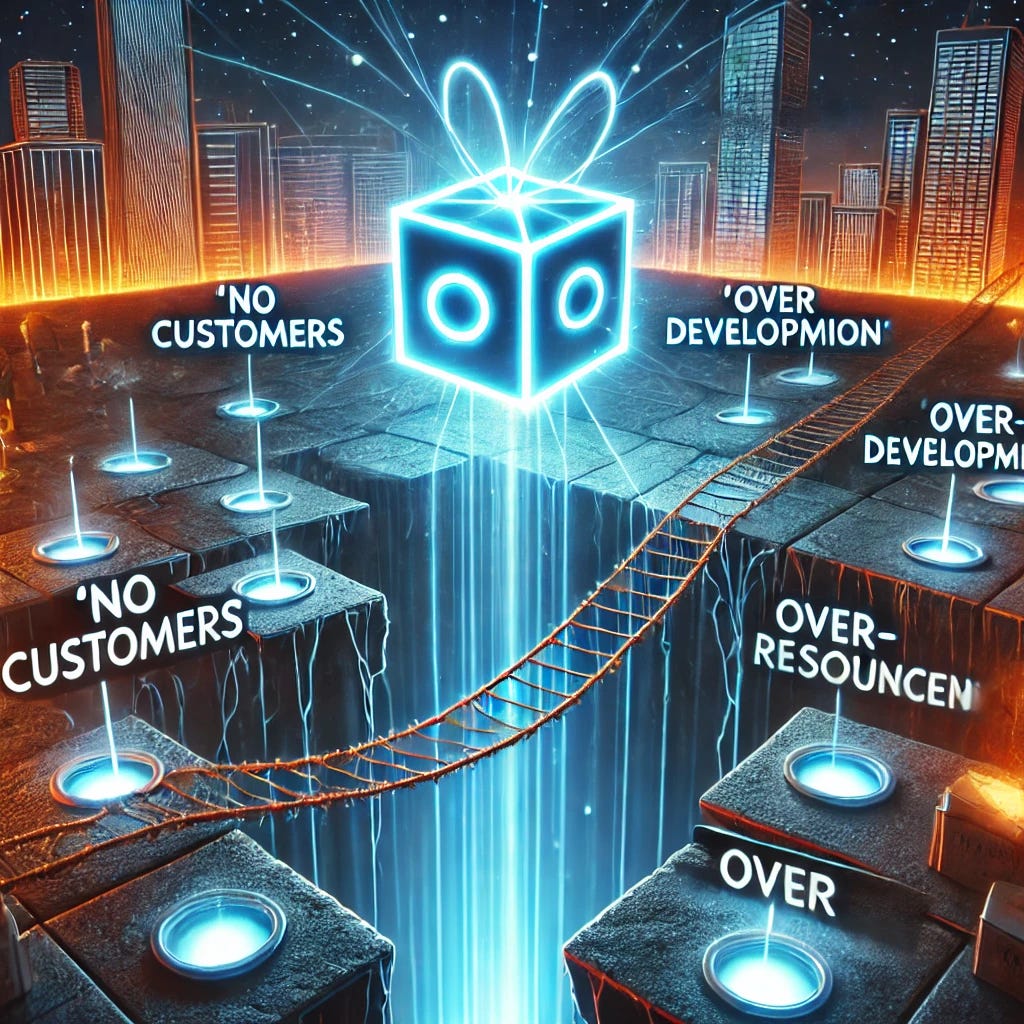As a startup founder, it is easy to get caught up in building the perfect product. You have a great idea, and naturally, the first thing you want to do is dive into development. But here is the harsh truth: if no one buys or uses your product, all that effort will go to waste. I have seen this happen far too often, especially in places like Iran, where startups struggle to balance product creation with finding their market.
Let me explain what I call the Product Development Trap and why it happens.
Why We Fall Into this Trap
For two reasons, generally startup founders put too much focus and energy on product development:
1. Building Feels Safer
Sitting at your desk, writing code, or tweaking features feels productive and it is comfortable. Talking to customers, pitching ideas, and risking rejection? That’s a lot scarier. So, many founders stay in their safe zone, focusing on the product instead of facing the messy reality of finding customers.
2. Trying to Copy Big Companies
We see companies like Apple or Google (and Snapp, Digikala, Tapsi) rolling out flashy new products and think, “I just need to do something like that.” But big companies have huge budgets, established brands, and loyal customer bases. Startups don’t. Focusing only on your product won’t magically put you on their level.
The Problem With This Approach
If you focus only on building your product, you risk creating something no one needs. Worse, you’ll struggle to attract investors. Why? Because investors don’t fund ideas, they fund proof of concept. They want to see real demand, paying customers, and signs your business can grow.
How Can This Be Addressed?
There are many approaches in the field of Customer Development that can provide valuable insights when explored and applied.
An even more effective strategy is to dedicate equal attention to distribution methods while working on product development. This also requires a shift in mindset: instead of trying to outdo established companies, focus on understanding your customers’ needs and viewing your product from their perspective.
The 50/50 Rule
So, how do you avoid the trap? One word: Balance. There is something called the 50/50 Rule, which I have found incredibly helpful. In their book Traction, Gabriel Weinberg and Justin Mares states that startups should split their time equally between product development and traction and finding customers.
Sure, this might slow down your product development, but it will speed up your learning. The sooner you engage with customers, the faster you will know if your idea actually works, and how to make it better.
Take Dropbox, for example. In the early days, they spent $230 on ads to get a customer who paid $99. That clearly wasn’t working. So, they shifted to a referral program, letting users market for them, and it worked perfectly.
Why It is Worth It
Talking to customers early gives you insights you would never get just by building:
-
Who your real audience is?
-
What they care about?
-
How they find you?
This feedback doesn’t just improve your marketing. It helps you shape a better product.
Final Thoughts
Building a great product isn’t enough. If no one uses it, it won’t matter how amazing it is. Balancing product development with customer discovery is hard, but it’s what separates startups that succeed from those that don’t.
What do you think about the 50/50 Rule? Could it help startups in your community?
(This is a fresh rewrite of a post I wrote a while ago, updated with new thoughts and lessons. Thanks for reading!)


